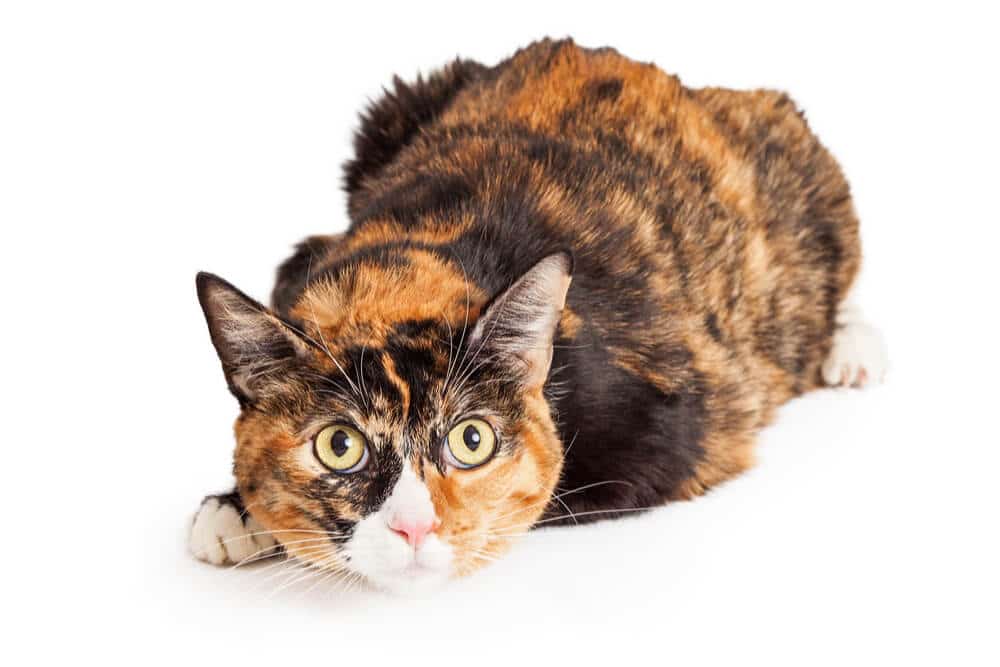Welcome to DU!
The truly grassroots left-of-center political community where regular people, not algorithms, drive the discussions and set the standards.
Join the community:
Create a free account
Support DU (and get rid of ads!):
Become a Star Member
Latest Breaking News
Editorials & Other Articles
General Discussion
The DU Lounge
All Forums
Issue Forums
Culture Forums
Alliance Forums
Region Forums
Support Forums
Help & Search
Good News
Related: About this forumGene determinative of orange fur in cats (probably) found at last -- was difficult, as is in "Wrong" Place (catz!)
Last edited Wed Dec 4, 2024, 12:43 PM - Edit history (1)

It would be pretty easy to guess that Garfield was a tomcat even if you didn’t know his name—or didn’t want to peek under his tail. Most orange cats are boys, a quirk of feline genetics that also explains why almost all calicos and tortoiseshells are girls...
Scientists have long been fascinated by tortoiseshell and calico cats: the offspring of a black cat and an orange cat. Multicolored cats from such a cross are almost always female, suggesting the gene variant that makes fur orange or black is located on the X chromosome. The male offspring of such a cross are typically unicolor because they inherit just one parent’s X chromosome: We can guess, for instance, that Garfield’s mother is orange because he inherited his only X chromosome from her.
But female cats inherit an X chromosome from each parent. Cells don’t generally need both, so during embryonic development each cell randomly chooses one X to express genes from. The other chromosome rolls up into a mostly inert ball—a phenomenon called X inactivation. As a result, tortoiseshell cats end up with separate patches of black and orange fur depending on which chromosome was inactivated in that part of their skin. Calico cats add white fur into the mix because they have a second, unrelated genetic mechanism that shuts down pigment production in some cells...
But the gene encoding Mc1r [which is the determinate of red hair in other mammals] didn’t seem explain where cats’ orange fur came from. It isn’t located on the X chromosome in cats or any other species—and most orange cats don’t ave Mc1r mutations. “It’s been a genetic mystery, a conundrum,” says Greg Barsh, a geneticist at Stanford University...
https://www.science.org/content/article/gene-behind-orange-fur-cats-found-last

The Mystery Gene Was Hiding in Plain Sight, if one thought to look somewhere where other than where it was supposed to be.
Lesson in that about discovery and life.
2 replies
 = new reply since forum marked as read
Highlight:
NoneDon't highlight anything
5 newestHighlight 5 most recent replies
= new reply since forum marked as read
Highlight:
NoneDon't highlight anything
5 newestHighlight 5 most recent replies
Gene determinative of orange fur in cats (probably) found at last -- was difficult, as is in "Wrong" Place (catz!) (Original Post)
SorellaLaBefana
Dec 2024
OP
Your link is a bit muddled (it's the local file address on your computer)..
Princess Turandot
Dec 2024
#1
Princess Turandot
(4,904 posts)1. Your link is a bit muddled (it's the local file address on your computer)..
Here's the URL:
https://www.science.org/content/article/gene-behind-orange-fur-cats-found-last
Thanks for posting!
SorellaLaBefana
(472 posts)2. Thank You SO MUCH
I was *wondering* why could not link to this headline image in the article

As were the researchers, I definitely was Looking in the Wrong Place! Apparently the link saved as a PDF without my realizing it—or I saved it with Print Friendly and had forgotten.
On the *other* hand, there is this fascinating article (with an *actual* link)
Abstract [which can be freely accessed from PubMed. The paragraphs do not exist—I added for readability—as the abstract is only *one* paragraph]
With the improvement in modern medicine, the world’s human and feline (Felis catus, the domestic cat) population is aging. As the population grows older, there is an increase of age-related diseases, such as Alzheimer’s disease in humans and feline cognitive dysfunction in felines, which shares many similarities with Alzheimer’s disease.
They both result in cognitive decline and lack effective treatments. In light of their pathological similarities, both occur at old age, and as domestic cats share the human environment and risk factors (cats are considered an indicator to the effect of environmental contaminants on humans as they share exposures and diseases), cats have the potential to be a spontaneous model for Alzheimer’s disease.
Classic animal models in many cases fail to predict the results in humans, and a natural model can lead to better prediction of results, thus being both time and cost-effective. The feline disease can be researched in trials that could be simultaneously clinical trials for cats and preclinical trials for humans, also referred to as reverse translational medicine.
As both maladies lack effective medical intervention, new potential treatments are merited. Cannabidiol (CBD) is a promising agent that may improve the life of these patients, as it was shown to potentially treat several of the pathologies found in both conditions. yet there is a need for further research in order to establish the benefits and safety of CBD to both human and feline patients.
https://pmc.ncbi.nlm.nih.gov/articles/PMC7819322/
With the improvement in modern medicine, the world’s human and feline (Felis catus, the domestic cat) population is aging. As the population grows older, there is an increase of age-related diseases, such as Alzheimer’s disease in humans and feline cognitive dysfunction in felines, which shares many similarities with Alzheimer’s disease.
They both result in cognitive decline and lack effective treatments. In light of their pathological similarities, both occur at old age, and as domestic cats share the human environment and risk factors (cats are considered an indicator to the effect of environmental contaminants on humans as they share exposures and diseases), cats have the potential to be a spontaneous model for Alzheimer’s disease.
Classic animal models in many cases fail to predict the results in humans, and a natural model can lead to better prediction of results, thus being both time and cost-effective. The feline disease can be researched in trials that could be simultaneously clinical trials for cats and preclinical trials for humans, also referred to as reverse translational medicine.
As both maladies lack effective medical intervention, new potential treatments are merited. Cannabidiol (CBD) is a promising agent that may improve the life of these patients, as it was shown to potentially treat several of the pathologies found in both conditions. yet there is a need for further research in order to establish the benefits and safety of CBD to both human and feline patients.
https://pmc.ncbi.nlm.nih.gov/articles/PMC7819322/
Thus this morning's confusion could be a harbinger: perhaps should go searching for CBD products after updating this.

Also, I should *check* the links before posting which, unconscionably, I did not in OP.